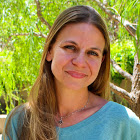

 Course Overview:
Course Overview:
The late 1200s and 1300s saw substantial population shifts in the eastern Plains and Midwest. These occurred in the context of profound sociopolitical and demographic changes, particularly the political decline and depopulation of Cahokia, and regional climatic variation, including significant changes in northern hemisphere temperatures and severe regional droughts. A series of sites in northeastern Nebraska show blended patterns of ceramic design suggesting that groups lived side by side in some areas, interacting face-to-face and forming new communities with distinct identities. This excavation, located near Lynch, Nebraska, focuses on uncovering a site in this series where people subsistence on bison and maize agriculture. This field school will instruct students in basic archaeological excavation techniques and the processing of artifacts. Students will learn basic bone and ceramic identification as well as mapping and recording techniques.
Course Requirements & Credit:
Open to current Augustana University students
Prerequisites: None
Credit: 3 or 6 ANTH elective credits
Program Dates: May 31-July 2, 2022
Application Deadline: April 1
Comprehensive Fees:
Costs: 6 credit hours (estimate: $440 per credit hour, approximately $2640) + estimated at $750 for room & board
Lodgings:
Students will camp around a main house which will be used for bathrooms, showers, and cooking needs. We will be taking turns cooking and cleaning in camp.
Instructors

Dr. KC Carlson
Assistant Professor
605.274.5327
kristen.carlson@augie.edu
Dr. K.C. Carlson’s research focuses on paleoenvironmental reconstruction through the use of stable isotopes and trace elements. This research focuses predominantly on Paleoindian bison kills in North America. She has also studied bison herd manipulation and drive lane construction for bison jumps using GIS analysis. Dr. Carlson received a Ph.D. from the University of Oklahoma, and an M.A. from Northern Arizona University. During her time at Northern Arizona University she worked for the National Park service where she studied and preserved prehistoric Southwestern pueblo sites. In addition to Native North American studies, she has engaged in projects in Japan, France and Great Britain.

Dr. Doug Bamforth
Professor
University of Colorado - Boulder
303-492-7586
douglas.bamforth@colorado.edu
Dr. Bamforth is an archaeologist who works mainly on the Great Plains; having also worked in the Colorado mountains, coastal California, the California desert, the Great Basin, Germany, and Ireland. He has a major technical interest in the study of how ancient people made and used stone tools. His research has focused on how human use of the Plains landscape responded to long-term environmental change during the Paleoindian period (from roughly 11,000 to 8000 BC); recently, his interests have shifted towards the archaeology of farmers on the central and northern Plains during the last 1000 years. Dr. Bamforth is currently involved in a long-term field project that examines the archaeology of the Ceramic Period along the Pine Ridge in northwestern Nebraska.
